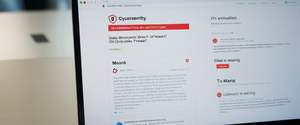
Email aliases represent a sophisticated yet underutilized privacy mechanism that, when strategically deployed, function as early warning systems for data breaches and unauthorized data sharing. By assigning unique email addresses to individual services and vendors, organizations and individuals can immediately identify the source of exposure when those distinctive addresses appear on dark web marketplaces, breach databases, or in phishing campaigns. This report comprehensively examines how email aliases serve as breach detection canaries within the broader context of dark web monitoring and exposure management, analyzing their technical implementation, effectiveness, limitations, and integration with modern cybersecurity practices.
Understanding Email Aliases and Their Foundational Role in Breach Detection
Email aliases represent additional email addresses that route to a primary inbox, fundamentally different from maintaining multiple separate email accounts. An email alias is essentially a different name by which a user can be discovered and contacted, analogous to an actual alias in espionage contexts. The core principle underlying their use as breach canaries is deceptively simple: if a unique alias is created for a specific service and later receives unsolicited communications from other sources, the original service that received that alias must have either shared the address with others or experienced a data breach.
The concept gained particular prominence through the discovery that certain threat actors actively scrub aliases from stolen databases before reselling them in underground markets. This behavior itself constitutes critical evidence of aliases’ effectiveness as breach indicators. According to cybersecurity experts at Hold Security, many threat actors remove aliases because there is a widespread perception that users employing aliases are more security- and privacy-focused than typical users, and therefore are more likely to detect and report spam, making aliased addresses less valuable for spammers and attackers. The fact that threat actors invest time and resources into removing aliases demonstrates that these addresses pose a genuine threat to their operational efficiency.
The fundamental advantage of aliases as breach canaries stems from their implementation characteristics. When a user creates an alias exclusively for one vendor or service and never uses it anywhere else, any email sent to that alias from an unexpected source provides conclusive evidence of a breach at the original recipient. This principle has been validated repeatedly through real-world incidents where security-conscious individuals identified data breaches at specific organizations by observing spam patterns on their unique aliases before the affected companies officially acknowledged the compromise.
Technical Architecture of Email Alias Implementation
The implementation of email aliases exists on a spectrum of technical sophistication, each approach presenting distinct advantages and vulnerabilities when deployed as breach detection mechanisms. Understanding these technical variations is essential for organizations attempting to operationalize aliases as components of their exposure monitoring strategy.
Plus Addressing and Basic Alias Mechanisms
The most elementary form of email aliasing involves plus addressing, a technique that adds a plus character followed by a tag to an email address to create virtually unlimited variations tied to a single mailbox. For example, a user with the address `[email protected]` can employ `[email protected]`, `[email protected]`, or `[email protected]` when registering with different services. Email providers, when receiving emails to these tagged addresses, automatically strip everything after the plus symbol and deliver the message to the primary inbox.
While plus addressing offers simplicity and requires no additional infrastructure, it suffers from significant limitations as a breach detection mechanism. Email marketers and data aggregators have become increasingly sophisticated at recognizing and removing plus addresses before selling data or sharing information across networks. Many services explicitly strip the plus-sign extension during data processing, immediately revealing that any alias employed by the original recipient is merely a variation of their primary email address. This normalization practice fundamentally undermines the anonymity and separation that aliases are meant to provide.
Research on email alias adoption reveals that only approximately 0.03% of breached records currently include an alias, according to analysis of data from Have I Been Pwned. This exceptionally low prevalence rate actually demonstrates the effectiveness of aliases as a filtering mechanism—the rarity of their appearance in breach databases suggests that many users employing aliases successfully detect compromises before widespread exposure occurs, allowing them to modify their security posture accordingly.
Custom Domain Aliases with Catch-All Configuration
A more sophisticated approach to email aliasing involves implementing custom domains with catch-all configurations, where any email address at a particular domain automatically forwards to a primary inbox. Rather than using plus addressing like `[email protected]`, users maintain personal domains and create addresses like `[email protected]`, `[email protected]`, or `[email protected]`. This methodology offers several strategic advantages for breach detection, particularly the obscurity afforded by these addresses not being immediately recognizable as aliases.
Custom domain approaches complicate the linkage between disparate identities in the eyes of potential data buyers or attackers. While plus addresses transparently reveal their true nature to any moderately sophisticated observer, custom domain aliases require additional information or metadata to trace back to the primary identity. If multiple breached databases are involved, an attacker might need to correlate information across databases—such as using the same name, phone number, or physical address—to definitively link various aliases to a single individual. While this correlation is possible, particularly with the proliferation of data breaches exposing comprehensive personal information, the additional friction created by custom domain aliases still provides meaningful protection compared to plus addressing.
The catch-all configuration enables unlimited alias generation without requiring individual pre-creation or management in a separate system. Users can spontaneously generate new aliases on demand by simply using any valid local part before their domain name, with the system automatically routing emails to the designated mailbox. This flexibility makes the approach scalable for individuals or organizations managing relationships with numerous vendors.
Advanced Alias Services and Privacy-Focused Solutions
Beyond self-managed domains, specialized email aliasing services have emerged to provide managed alias infrastructure with enhanced privacy and security features. Services such as Apple’s Hide My Email, SimpleLogin, Firefox Relay, and addy.io enable users to generate unique, randomized email addresses that automatically forward to primary mailboxes while shielding the original email address from recipients and service providers. These services typically generate addresses that bear no relationship to the user’s identity, making it computationally impossible to link multiple aliases to a single individual without access to the service provider’s internal records.
Apple’s Hide My Email implementation, integrated with iCloud+ subscriptions, automatically generates unique forwarding addresses in the format of `[email protected]` when users employ Sign in with Apple for account creation. SimpleLogin, by contrast, offers both generated aliases and user-chosen aliases at custom domains, providing flexibility alongside the option for on-the-fly generation of addresses at subdomains. These managed solutions add complexity to breach detection workflows because they introduce a third-party dependency—the service provider must not be compromised or malicious for the system to maintain integrity.
The fundamental advantage of these services over self-managed solutions lies in their integration with modern authentication frameworks and the reduction of setup complexity for average users. However, this advantage comes with a corresponding risk: if the aliasing service provider experiences a breach or implements malicious practices, the compromise affects not just the services registered through the aliases but potentially reveals all aliases managed through that service.
Dark Web Monitoring Infrastructure and Breach Detection Workflows
The effectiveness of email aliases as breach canaries fundamentally depends on complementary exposure monitoring infrastructure that scans dark web sources and data breach databases to identify when aliased email addresses appear in compromised datasets.
Architecture of Dark Web Monitoring Systems
Dark web monitoring represents the process of continuously searching the dark web and related underground sources to identify compromised organizational or personal information, including email addresses, credentials, intellectual property, and other sensitive data. Dark web monitoring tools function analogously to search engines designed specifically for cybercriminal marketplaces, forums, and exchanges, continuously scanning millions of sources for specific indicators. These systems pull raw intelligence in near real-time from databases, forums, marketplaces, Telegram channels, ransomware blogs, and other illicit sources.
The technical implementation of dark web monitoring involves several interconnected components. First, the system maintains access to extensive data pools derived from dark web sources, including compromised databases, stolen credential caches, and leaked information repositories. NordStellar, for example, reports seven years of experience monitoring deep and dark web sources with access to one of the largest data pools for dark web monitoring, enabling tracking of criminal discussions and detection of emerging threats across thousands of forums. Second, the monitoring infrastructure continuously indexes and analyzes this collected data against target assets—typically email addresses, domains, usernames, and other organizational identifiers—searching for matches.
When matches are identified, the system generates real-time alerts containing contextual information about the source, type of data compromised, and relevant threat intelligence. Modern dark web monitoring solutions enable customized alert configuration allowing organizations to specify which information categories trigger notifications and to which team members alerts should be directed.
Data Breach Detection Methodology
The fundamental challenge in dark web monitoring lies in identifying which of the millions of daily data exposures correspond to specific organizations or individuals. The matching process typically operates on multiple levels, from simple keyword and pattern matching to sophisticated semantic analysis and contextual correlation.
Basic keyword matching identifies exact matches of email addresses in indexed dark web databases. When an aliased email address `[email protected]` appears in a breached database indexed by a monitoring service, the system immediately flags this as a potential exposure event. More sophisticated implementations recognize patterns associated with data leaks—for instance, when multiple email addresses sharing a common domain or following a consistent naming convention appear together in a database, this pattern often indicates a specific organizational breach rather than coincidental overlap.
The integration of threat intelligence enriches raw breach detection by providing context about the source, sophistication of the breach, and likely impact. When an email address appears in connection with a known ransomware group’s data leak site, the severity assessment differs substantially from an appearance in a generic credential repository. Analysis of the attack patterns, targeting methodology, and infrastructure used can inform estimates of what data was likely compromised, enabling affected parties to take proportionate response measures.
Filtering, False Positives, and Verification
Raw dark web monitoring generates substantial noise, including corrupted data, duplicate entries, intentional misinformation from competing threat actors, and false leads. Effective dark web monitoring implementations incorporate human analysis to verify detected exposures and reduce false positive rates. This verification process involves examining the source credibility, assessing whether the detected data shows characteristics consistent with legitimate breaches, and in some cases reaching out to affected organizations or individuals to confirm exposure.
The limitations of automated dark web scanning become apparent when considering the inaccessibility of certain communication channels. End-to-end encrypted platforms such as Telegram, private chat channels, and password-protected marketplaces present barriers to automated scanning, as the monitoring service cannot access the content of encrypted communications without the decryption keys held by participants. This limitation means that not all data exposures will be detected, particularly those handled by sophisticated threat actors who utilize private channels rather than public dark web forums and marketplaces.
The Canary Trap Principle Applied to Email: A Historical and Conceptual Framework
The application of email aliases to breach detection draws its philosophical foundation from classical canary traps, a decades-old counterintelligence technique designed to identify the sources of information leaks within organizations.
Traditional Canary Trap Methodology
A canary trap is a method for exposing an information leak by providing different versions of a sensitive document to each of several suspects and observing which version gets leaked, with careful attention paid to the quality and uniqueness of the prose in hopes that the suspect will repeat it verbatim in the leak. The term was popularized by novelist Tom Clancy in his 1987 novel *Patriot Games*, though Clancy did not invent the technique—it has been employed by intelligence agencies for decades under the alternative designation of barium meal test.
The fictional character Jack Ryan in Clancy’s novel describes an implementation of the technique: each summary paragraph in a sensitive document contains six different versions, and the mixture of those paragraphs is unique to each numbered copy of the paper. With over a thousand possible permutations but only ninety-six numbered copies, the probability of identifying which copy was leaked becomes extremely high if even a few paragraphs are quoted verbatim in public media. Advanced implementations utilize thesaurus programs to shuffle synonyms throughout the document, ensuring that every copy remains genuinely unique while maintaining consistent meaning.
The success of canary traps depends on several critical factors. First, the uniqueness markers must be sufficiently obvious that an inadvertent leak will preserve them, yet subtle enough that individuals analyzing the document won’t immediately recognize they’re participating in a test. Second, the markers must be compelling enough that individuals quoting the document will naturally preserve them rather than paraphrasing or editing them. Third, the distribution must be sufficiently restricted that only the suspects need be considered when a leak occurs.
Email Aliases as Digital Canary Traps
Email aliases function as elegant digital implementations of the canary trap principle, adapted for the cybersecurity context where the suspects are not identified individuals but rather organizations and services to which users have entrusted their personal information. Rather than distributing uniquely marked documents to suspects, users distribute uniquely marked email addresses to services. Rather than awaiting a public leak to observe which version circulates, users monitor their email for unsolicited messages addressed to specific aliases.
The mechanisms of detection mirror the traditional approach. If an aliased email address receives unwanted communications, the source of those communications reveals which organization mishandled the address. The specificity of each alias creates a one-to-one mapping between breach source and detection, eliminating ambiguity. Unlike traditional canary traps, where sophisticated analysts might attempt to discern the source through linguistic analysis, the mechanism of email addresses eliminates interpretive uncertainty—an email addressed to `[email protected]` unambiguously indicates that either Vendor 382 shared the address, Vendor 382 experienced a breach, or Vendor 382 was compromised in a way that exposed user data.
Several high-profile cases demonstrate this principle’s effectiveness in practice. Following the 2021 data breach at Allekabels, a Dutch electronics retailer, researchers discovered that customers who had registered using email aliases were significantly more likely to be notified of the breach by the company itself. The publication RTL Nieuws obtained a copy of the breached database and found that the 5,000 customers whom Allekabels identified as compromised represented precisely those who had created unique aliases—the ratio of aliased addresses in this subset (0.14%) substantially exceeded the general prevalence rate (0.03%), suggesting that alias-using customers represented a disproportionate share of those whose data was detected and reported. The implication is stark: companies often don’t detect large-scale breaches affecting non-aliased users until external parties report the exposure, whereas aliased users can autonomously detect compromises through observation of suspicious email traffic.
Known Implementations and Real-World Applications
The canary trap principle applied to email has proven effective in detecting multiple real-world breaches and data sharing incidents. Coleen Rooney, a British celebrity and wife of soccer player Jamie Vardy, employed a barium meal test variation in October 2019 by posting fake stories to her private Instagram account, visible only to specific followers, then monitoring which details appeared in tabloid press. When the fabricated information appeared in *The Sun*, she publicly identified the source as originating from the account of Rebekah Vardy, leading to the subsequent “Wagatha Christie” libel trial. This case, while not involving email aliases specifically, demonstrated the public acceptance and media interest in canary trap methodologies for identifying information leaks.
In December 2020, United Kingdom Member of Parliament Andrew Lewer was dismissed from his parliamentary private secretary position after a canary trap in the form of a targeted letter reminding staff not to leak was published on the website Guido Fawkes, identifying him as the likely source based on unique markers in the letter. Apple Inc. applied the canary trap principle to software releases in 2023, firing a staffer for leaking information regarding upcoming software releases after sending uniquely dated release information to various employees in specific combinations to identify the leak source. These documented cases demonstrate that the canary trap principle, whether applied through email aliases or other mechanisms, has become a recognized and accepted counterintelligence technique in modern organizational contexts.
Evidence and Empirical Validation of Email Aliases as Breach Detection Mechanisms
The effectiveness of email aliases as breach canaries has been empirically validated through multiple independent observations and analyses, establishing their utility as legitimate security tools despite certain limitations.
Prevalence Data and Statistical Significance
Analysis of breach datasets provides compelling statistical evidence for the effectiveness of aliases. Have I Been Pwned, one of the most comprehensive breach tracking resources, reports that only approximately 0.03% of breached records in circulation include an alias, based on analysis of the 2013 Adobe breach affecting at least 38 million users. This extraordinarily low prevalence rate carries significant implications: either extremely few users employ aliases (likely true), or alias-using users successfully identify and prevent large-scale breaches through early detection, so their data never reaches circulation.
The differential detection rate observed at Allekabels provides additional evidence. While the general prevalence of aliases in the Adobe breach was 0.03%, Allekabels’ ratio of aliased users was 0.14%—nearly five times higher. This discrepancy is not random. Rather, it reflects the fact that users employing aliases detected the Allekabels compromise earlier and reported it more consistently than users with non-aliased accounts, resulting in significantly higher reported breach rates for alias users. The company’s own notification data supports this interpretation: the 5,000 customers identified as compromised by Allekabels corresponded precisely to the subset using aliases.
Detection of Data Sharing Without Explicit Breaches
Beyond detecting actual data breaches, email aliases have proven effective at identifying unauthorized data sharing practices. Multiple security-conscious users have reported receiving suspicious emails at specific aliases that they had never shared publicly, establishing with certainty that the organizations receiving those aliases had engaged in unauthorized distribution to third parties. In one documented case, a user receiving emails at an alias specifically created for a political fundraising organization at a subsequent email address from a different organization provided conclusive evidence that the first organization had shared contact information without explicit consent.
These findings validate the threat model underlying alias usage: if an organization receives a unique email address used nowhere else and that address subsequently receives communications from external parties, one of two scenarios must have occurred. Either the organization directly shared the address, or the organization experienced a compromise that exposed the address. The certainty of this deduction makes email aliases valuable for detecting both intentional data commercialization and inadvertent security breaches.

Attacker Recognition of Alias Effectiveness
Perhaps the most compelling evidence of email aliases’ effectiveness comes from threat actor behavior rather than user experience. Multiple independent analyses have documented that certain threat groups implement rules for removing aliases from stolen databases before resale or public distribution. Specifically, threat groups enforce policies for removing email addresses containing plus signs (`+*@`) because these addresses signal security-conscious users who are more likely to detect and report spam.
In one particularly revealing case, a cybersecurity consultant at Hold Security obtained an extremely large credentials cache of 1 billion newly compromised credentials and observed that the dataset had been extensively modified with alias portions removed through automated processing before reaching the consultant. The threat actors explicitly spent time understanding the database structure to identify and remove addresses with unusual characteristics, including plus-sign notation, to produce a cleaned dataset more suitable for sale or distribution. This behavior directly demonstrates that threat actors recognize aliases as barriers to their operations, validate them as effective detection mechanisms, and actively work to circumvent them.
Limitations, Vulnerabilities, and Constraints on Email Aliases as Breach Indicators
Despite their demonstrated effectiveness, email aliases face substantial limitations that constrain their deployment as comprehensive breach detection mechanisms, particularly when employed as primary security controls.
Technical Limitations and Service-Specific Rejection
Organizational and technical constraints prevent universal adoption of email aliases across all online services and registration systems. Not all websites accept email aliases, particularly legacy systems or those with overly restrictive email validation logic. Some platforms actively strip plus addresses during data processing, eliminating the distinction between alias variants. Others maintain databases that normalize email addresses, storing only the portion before the plus sign and thereby defeating the purpose of alias differentiation.
Additionally, certain categories of services inherently resist alias usage. Financial institutions, government agencies, and services requiring identity verification often reject aliases because the addresses don’t correspond to formal identity documentation. Services with strict email verification procedures may flag aliases as suspicious or block them during account creation. Healthcare and legal services frequently require demonstrated address stability, making throwaway or frequently-rotated aliases problematic.
Metadata Correlation and Advanced Linkage Techniques
While email aliases successfully obscure the connection between different aliases for a given user, other metadata often remains consistent across accounts, enabling determined attackers to correlate apparently unrelated identities. If a user registers for services using different email aliases but provides consistent names, phone numbers, physical addresses, or payment methods, attackers obtaining multiple breached databases can link the seemingly distinct identities through this consistent metadata.
The scale of data breaches means that comprehensive personal information often appears in multiple breach datasets. An attacker seeking to construct a complete graph of an individual’s online identities can cross-reference information like real names or phone numbers across multiple breached databases to discover that `[email protected]` and `[email protected]`, while different aliases, both appear in datasets linked to the same real name or phone number. The metadata correlation problem becomes increasingly severe as more organizations suffer breaches and leak progressively more comprehensive personal information.
False Negatives and Silent Breaches
Email aliases only provide detection when breached organizations actually sell or distribute the email addresses they’ve obtained, or when breached data reaches dark web markets monitored by detection services. Silent breaches—compromises where attackers extract sensitive data without publishing or commercializing it—go undetected through the alias mechanism. This limitation applies particularly to sophisticated data breaches conducted for espionage purposes or nation-state operations, where the stolen data never reaches public circulation.
Similarly, breaches affecting data not directly involving email addresses go entirely undetected by the alias mechanism. If an attacker compromises a service to steal payment information, credentials managed separately, or other sensitive data not intrinsically tied to the email address on file, the alias provides no detection signal. The alias mechanism detects only breaches that result in the email address itself becoming available to the attacker for misuse or sale.
Provider Compromise and Service Dependency Risks
Users relying on third-party alias services face an irreducible risk: if the service provider itself becomes compromised or operates maliciously, the entire alias infrastructure potentially collapses. A breach at SimpleLogin, Apple, or Firefox Relay would simultaneously expose not just the email addresses corresponding to individual accounts but potentially reveal the mapping of aliases to primary addresses. An attacker gaining access to Apple’s Hide My Email infrastructure would obtain a comprehensive list of randomly-generated forwarding addresses and the iCloud accounts to which they forward, creating a single point of failure for the entire alias strategy.
This dependency risk contrasts with self-managed domain approaches, where the user retains direct control over DNS infrastructure and email delivery. However, self-managed domains introduce different risks: inadequate security on the domain registrar account, DNS hijacking, or domain expiration. The risk cannot be entirely eliminated—it can only be distributed or reduced through careful architecture.
Management Complexity and Operational Burden
Effective alias usage requires discipline and consistency. Users must maintain detailed records of which alias corresponds to which service, avoid accidentally reusing aliases, and manage the complexity of increasing inbox diversification as more aliases are created. For organizations deploying aliases across multiple departments or business units, this management burden scales significantly, requiring centralized tracking and potentially specialized software to maintain the mapping of aliases to services.
Email clients frequently resolve aliases on the same mailbox to the primary address or a generic label like “You,” eliminating the visual distinction that would otherwise make it obvious which service an inbound message originated from. When a user receives an email from Amazon addressed to their alias, popular email clients might display the message as from “You” rather than preserving the alias address in the visual display, requiring manual inspection of the “To” line to determine the original recipient. This display issue undercuts one of the key benefits of aliases: immediate visual identification of which service an email came from.
Integration with Dark Web Monitoring and Comprehensive Exposure Management
To achieve their full potential as breach detection mechanisms, email aliases must be integrated with complementary exposure monitoring infrastructure that actively scans dark web sources for appearance of those aliases.
Coordinated Detection Workflows
An effective alias-based breach detection system operates through coordinated workflows integrating multiple components. First, the user or organization must systematically deploy unique aliases across all significant vendor relationships and services. These aliases should ideally be created through services or infrastructure the user controls or trusts sufficiently to accept the inherent risks.
Second, dark web monitoring services must be configured with watch lists containing all deployed aliases, with alerts configured to trigger immediately when any alias appears in monitored dark web sources. This requires integrating alias management with monitoring infrastructure—either through custom API integrations with monitoring services or through regular manual updates to watch lists.
Third, when an alias appears in dark web sources, a structured incident response workflow must engage automatically, verifying the exposure and initiating appropriate remediation actions. This workflow should include notification to the affected service, password resets, notification to affected customers if appropriate, and forensic investigation to determine the breach scope and cause.
Fourth, all data about detected exposures must be integrated into organizational threat intelligence and security incident response systems, enabling correlation with other suspicious indicators and contribution to broader situational awareness. A single alias appearing in breach databases might represent relatively minor exposure, but multiple aliases appearing in a coordinated set of breaches could indicate a sophisticated, targeted campaign against the organization.
Complementary Monitoring and Redundancy
Email aliases should not be deployed as a sole monitoring mechanism but rather as a component of layered exposure detection. Dark web monitoring alone, without alias infrastructure, provides detection of organizational compromise through keyword matching and pattern recognition. The addition of aliases provides a more granular mechanism, enabling pinpoint identification of exactly which service component was compromised.
Threat intelligence platforms that aggregate information from multiple sources provide additional detection layers. Indicators of compromise (IOCs) such as IP addresses, file hashes, and malware signatures can identify compromise attempts before email addresses reach dark web circulation. Phishing-resistant authentication mechanisms and behavioral anomaly detection can identify account compromise through access patterns rather than waiting for email exposure.
The most comprehensive exposure management strategies layer these mechanisms: dark web monitoring provides broad surveillance, email aliases provide pinpoint detection precision, threat intelligence feeds provide context and early warning signals, and behavioral analysis identifies anomalies suggesting compromise. No single mechanism suffices for comprehensive protection; rather, coordinated deployment of multiple mechanisms creates redundancy and ensures that even if one detection pathway fails, others provide detection and response capabilities.
Organizational Deployment Strategies and Implementation Best Practices
The deployment of email aliases as breach canaries varies significantly between individual users and large organizations, requiring distinct strategies and implementation approaches for each context.
Individual User Implementation
For individual users, email alias deployment typically focuses on privacy protection alongside breach detection. Individuals might establish a personal domain with catch-all configuration, creating seemingly random aliases for different categories of service usage: one domain section for financial services, another for shopping, a third for social media interactions, and so forth.
Alternatively, individuals might employ managed aliasing services that abstract away the infrastructure management requirements. Apple’s Hide My Email provides automatic forwarding address generation for iCloud+ subscribers, eliminating the need to maintain a separate domain or remember specific aliases. SimpleLogin and Firefox Relay provide similar functionality with varying privacy postures and technical implementation details. The selection between self-managed and service-managed approaches involves tradeoffs: self-management provides control but requires technical expertise and ongoing maintenance; service management provides convenience but introduces third-party dependency risks.
Individual users should establish a consistent naming convention for their aliases that enables easy correlation with source services when breach detection alerts arrive. Completely random aliases make it impossible to remember which service corresponds to which address, complicating incident response when breaches occur. Simple conventions like `[email protected]` or `[email protected]` enable rapid identification of affected services while still providing the necessary differentiation from other aliases.
Organizational Deployment
Organizations deploying aliases typically focus on detecting compromises within their own infrastructure or identifying when vendors and service providers inappropriately handle customer information. A financial services organization might assign unique aliases to each vendor relationship, enabling immediate identification if vendor data reaches dark web sources.
Organizational implementations typically involve centralized alias management infrastructure that generates aliases, maintains mappings to vendors and services, distributes aliases to appropriate organizational units, and interfaces with dark web monitoring services. This infrastructure might be implemented through custom software, spreadsheet-based tracking supplemented with monitoring service API integrations, or specialized third-party alias management platforms.
For organizations, the organizational structure of alias assignment matters substantially. Aliases can be assigned at the entity level (one alias per department or business unit), relationship level (one alias per vendor or partner), or transaction level (unique aliases for individual contracts or significant transactions). The appropriate granularity depends on organizational complexity and risk appetite: higher granularity provides more precision in identifying compromises but increases management burden proportionally.
Documentation and notification procedures become critical for organizational implementations. When an alias appears in dark web sources, the organization must identify the relevant vendor, verify that the organization actually maintains a relationship with that entity, confirm that the alias actually appears in publicly available breach data rather than representing a false positive, and initiate appropriate vendor communication and notification procedures.
Integration with Dark Web Monitoring Services
Effective organizational deployment requires integration with dedicated dark web monitoring services capable of ingesting custom watch lists and generating alerts when specified indicators appear. Services such as NordStellar, CrowdStrike Threat Intelligence, CanIPhish, and specialized SIEM integrations enable configuration of watch lists containing organizational aliases with real-time alerting when those aliases appear in monitored sources.
Configuration of these integrations typically involves specifying the aliases to monitor, defining alert thresholds and recipients, configuring automated reporting and escalation procedures, and establishing feedback mechanisms to improve alert precision and reduce false positives over time. Many organizations require coordination between security teams managing the dark web monitoring service and vendor management teams who receive notifications when vendor compromises are detected through aliases.
Best Practices for Maximizing Email Alias Effectiveness
Successful deployment of email aliases as breach canaries requires adherence to several established best practices that enhance detection reliability while managing operational complexity.
Consistent Alias Uniqueness and Service Isolation
The fundamental requirement for effective alias-based detection is absolute uniqueness and isolation: each alias should be created exclusively for a single service and used nowhere else. Users or organizations that reuse aliases across multiple services defeat the isolation principle, making it impossible to determine which of multiple services experienced compromise when unsolicited communications arrive at the alias.
Alias uniqueness must extend beyond mere technical distinctiveness to include operational isolation. Even if an alias is technically unique, if it appears in multiple databases or breach repositories due to corporate consolidations, acquisition chains, or vendor relationships, the breach detection signal becomes muddied. Users should ideally create aliases specifically for direct vendor interactions and avoid using the same alias for interactions through intermediaries or resellers.

Documentation and Incident Response Readiness
Organizations deploying aliases must maintain comprehensive documentation of the alias-to-service mapping, enabling rapid identification when breach detection alerts arrive. This documentation should include the creation date, current status, the service or vendor receiving the alias, and contact information for the relevant business unit or department responsible for the vendor relationship.
Incident response procedures must be pre-established and regularly updated to incorporate lessons from breach detection experiences. When an alias appears in dark web sources, the response should include: verifying the appearance through multiple sources; confirming that the organization actively maintains a relationship with the identified vendor; notifying the affected vendor; determining the scope of data compromise; assessing regulatory notification requirements; notifying affected customers if appropriate; and implementing remediation measures such as password resets or enhanced monitoring of the affected account or service category.
Monitoring Service Integration and Verification
Organizations must integrate aliases into dark web monitoring services in ways that maximize detection precision while minimizing false positives. This typically involves initial setup of watch lists containing all active aliases, followed by ongoing refinement based on alert patterns.
Organizations should verify that dark web monitoring services actually detect the deployed aliases through periodic testing. Controlled tests might involve working with security researchers or penetration testers to deliberately publish test aliases in monitored sources and verify that the monitoring service detects them within expected timeframes. This verification ensures that the monitoring infrastructure is functioning as intended and that alerts will arrive when actual compromises occur.
Balancing Alias Deployment with Practical Constraints
While universal alias deployment across all vendor relationships represents the theoretical ideal, practical constraints often necessitate selective alias usage. Organizations should prioritize alias deployment for:
– High-risk vendors and services: Organizations or systems with access to sensitive data, critical systems, or large customer populations warrant aliases due to their elevated breach risk.
– Data-intensive services: Vendors handling substantial customer or organizational data should receive aliases enabling detection if they suffer compromise.
– Long-term vendor relationships: Ongoing vendor relationships justify the management burden of aliases better than short-term transactional relationships.
– Third-party contractors and partners: External parties with access to internal systems or sensitive information should interact through aliased addresses enabling rapid compromise detection.
In contrast, low-risk categories might be excluded from alias programs:
– Vendors with built-in anonymity features: Services that provide inherent privacy protection require less additional monitoring.
– Truly ephemeral services: One-time or extremely brief interactions might not justify alias overhead.
– Services with strong breach notification requirements: Highly regulated industries where vendors are obligated to promptly notify compromises might reduce the value of aliases.
Complementary Technologies and Emerging Approaches
Modern cybersecurity increasingly integrates email aliases with complementary detection technologies and emerging approaches that enhance breach detection capabilities.
Canary Tokens and Enhanced Deception
The deception technology concept extends beyond email aliases to canary tokens—lightweight digital tripwires embedded in files, URLs, API keys, or cloud services that trigger alerts when accessed by attackers. Canary tokens function analogously to physical canary birds historically deployed in coal mines to detect dangerous gases; unauthorized access to the token immediately reveals attacker presence.
Email aliases can be combined with canary tokens as comprehensive deception infrastructure. For example, an organization might deploy a fake credential file labeled with an aliased email address; if the file is accessed and the credential is used, the canary token triggers an alert while the alias provides identification of which service or breach likely revealed the credential’s location. This layered approach provides multiple detection signals and enables correlation of attack patterns across different compromise pathways.
Machine Learning and Behavioral Anomaly Detection
Modern dark web monitoring increasingly incorporates machine learning algorithms that identify suspicious patterns in breach datasets that might escape human notice or simple keyword matching. Algorithms can recognize when multiple email addresses in a breached database follow unusual patterns, potentially indicating that the organization employed systematic approaches to alias generation.
Conversely, machine learning can help identify false positives and genuine breaches in the sea of dark web noise. By analyzing characteristics of verified breaches, algorithms can learn to recognize indicators suggesting that a particular data exposure in dark web sources likely represents a genuine compromise rather than recycled data or researcher artifacts.
Integration with Security Orchestration and Incident Response
Contemporary SOAR (Security Orchestration, Automation, and Response) platforms increasingly integrate dark web monitoring capabilities with incident response automation. When an aliased email address appears in dark web sources, automated workflows can immediately notify relevant stakeholders, gather contextual threat intelligence, disable compromised accounts, and initiate formal incident investigations.
This automation significantly accelerates response times, reducing the window between breach detection and containment. Rather than requiring manual coordination between security team members, vendor managers, and forensic investigators, automated workflows ensure that all appropriate response procedures engage immediately upon breach detection.
Limitations Relative to Modern Threat Landscapes and Emerging Attack Patterns
Despite their proven effectiveness in traditional breach scenarios, email aliases face limitations in protecting against emerging attack patterns and evolving threat landscapes.
Supply Chain Compromises and Multi-Stage Attacks
Modern sophisticated attacks increasingly employ supply chain compromise patterns where attackers target vendors to gain access to their customers rather than directly compromising end users. In these scenarios, the compromised vendor might employ aliases or other security measures, but attackers operating through compromised vendor infrastructure can still access customer data without exploiting the vendor’s primary systems.
For example, if attackers compromise a service provider’s backup systems or cloud infrastructure, they might access customer data without triggering detection mechanisms focused on the primary customer-facing systems. The aliased email address might not appear in underground markets or trigger dark web monitoring alerts if the attacker uses the compromise for direct espionage rather than financial exploitation.
Insider Threats and Trusted Access Abuse
Email aliases provide no protection against insider threats where authorized individuals misuse legitimate access to customer or organizational data. An insider with legitimate access to customer databases can export all email addresses and associated data without the addresses reaching dark web sources or triggering monitoring. The alias mechanism only detects when email addresses are misused by external parties; it doesn’t detect when insiders abuse legitimate access privileges.
Fragmented and Staged Data Exposure
Sophisticated threat actors increasingly employ strategies where compromised data is fragmented and exposed slowly rather than released in bulk. An attacker might sell customer data piecemeal to different buyers, keep portions for personal use, or stage releases over extended periods to avoid detection. In these scenarios, aliased email addresses might appear in underground markets gradually or not at all, limiting detection effectiveness.
Future Evolution and Emerging Considerations
The landscape of email aliases, dark web monitoring, and breach detection continues evolving in response to adversary adaptation and technological advancement.
Standardization and Integration with Identity Frameworks
Email aliases might increasingly become standardized components of identity infrastructure rather than ad-hoc privacy mechanisms. As organizations recognize the value of email aliases for breach detection and management flexibility, we might anticipate efforts to standardize alias implementation across email platforms and identity providers. This standardization could enable more sophisticated integration with authentication systems, reducing administrative burden while improving security properties.
Regulatory and Compliance Implications
Regulations increasingly mandate rapid breach detection and notification obligations. Email aliases and dark web monitoring could become standard components of compliance frameworks, with regulatory guidance specifying requirements for systematic exposure monitoring and breach detection. Organizations subject to GDPR, HIPAA, PCI-DSS, or similar regulations might find that alias-based monitoring systems satisfy regulatory requirements for rapid breach detection and customer notification.
Adversary Adaptation and Counter-Measures
As alias usage becomes more widespread, threat actors will likely develop increasingly sophisticated counter-measures. We can anticipate efforts to automatically identify aliases in compromised databases, develop algorithms to link seemingly distinct aliases to single individuals through metadata correlation, or develop techniques to monetize alias-based breaches despite attacker awareness of alias usage patterns.
Correspondingly, security innovations will likely emerge to counter these adaptations, including more sophisticated alias generation schemes, improved integration with privacy-preserving identity infrastructure, and development of alias-based detection mechanisms specifically designed to resist known attacker counter-measures.
The Alias Canary: Your Final Word on Vigilance
Email aliases, when properly deployed as components of comprehensive exposure monitoring infrastructure, represent an underutilized yet demonstrably effective mechanism for detecting data breaches and unauthorized data sharing. By applying the classical canary trap principle to email infrastructure, organizations and individuals can identify precisely which vendors or services have compromised their data, enabling targeted incident response and proportionate remediation.
The empirical evidence supporting alias effectiveness is compelling: threat actors actively work to remove aliases from stolen databases before resale, indicating that they recognize aliases as barriers to their operations. Real-world cases including the Allekabels breach demonstrate that alias-using individuals consistently detect compromises earlier than non-alias users. The extraordinarily low prevalence of aliases in widely-circulated breach databases likely reflects a combination of low overall adoption and successful early detection by the privacy-conscious users who employ aliases.
Integration of email aliases with dark web monitoring infrastructure creates powerful detection capabilities. While individual aliases provide detection signals that must be interpreted within the context of broader organizational and technical landscape, systematic deployment of aliases across vendor relationships combined with automated dark web monitoring creates comprehensive exposure visibility.
However, aliases are not silver bullets and must be understood within their actual threat model. They detect compromises resulting in email exposure to external parties; they do not detect silent breaches where data is exfiltrated without disclosure, insider threats exploiting authorized access, or sophisticated supply chain compromises. Their effectiveness diminishes when users fail to maintain alias discipline, when metadata correlation makes aliases linkable despite technical distinctiveness, or when third-party alias service providers themselves become compromised.
The optimal deployment strategy involves layered approaches: email aliases provide granular detection of specific vendor compromises; dark web monitoring provides broad surveillance of threat landscape; threat intelligence feeds provide context and early warning; and behavioral anomaly detection identifies suspicious access patterns. Organizations pursuing comprehensive exposure management should systematically integrate email aliases with complementary detection mechanisms, recognize their limitations, and establish robust incident response procedures for when breach detection occurs.
As data breaches continue accelerating and attackers become more sophisticated, the ability to rapidly identify which specific vendor relationship has been compromised—enabling targeted notification, remediation, and prevention—becomes increasingly valuable. Email aliases, deployed strategically within comprehensive dark web monitoring and exposure management frameworks, provide precisely this capability, making them worthy of substantially wider adoption than current usage patterns suggest.
Protect Your Digital Life with Activate Security
Get 14 powerful security tools in one comprehensive suite. VPN, antivirus, password manager, dark web monitoring, and more.
Get Protected Now





